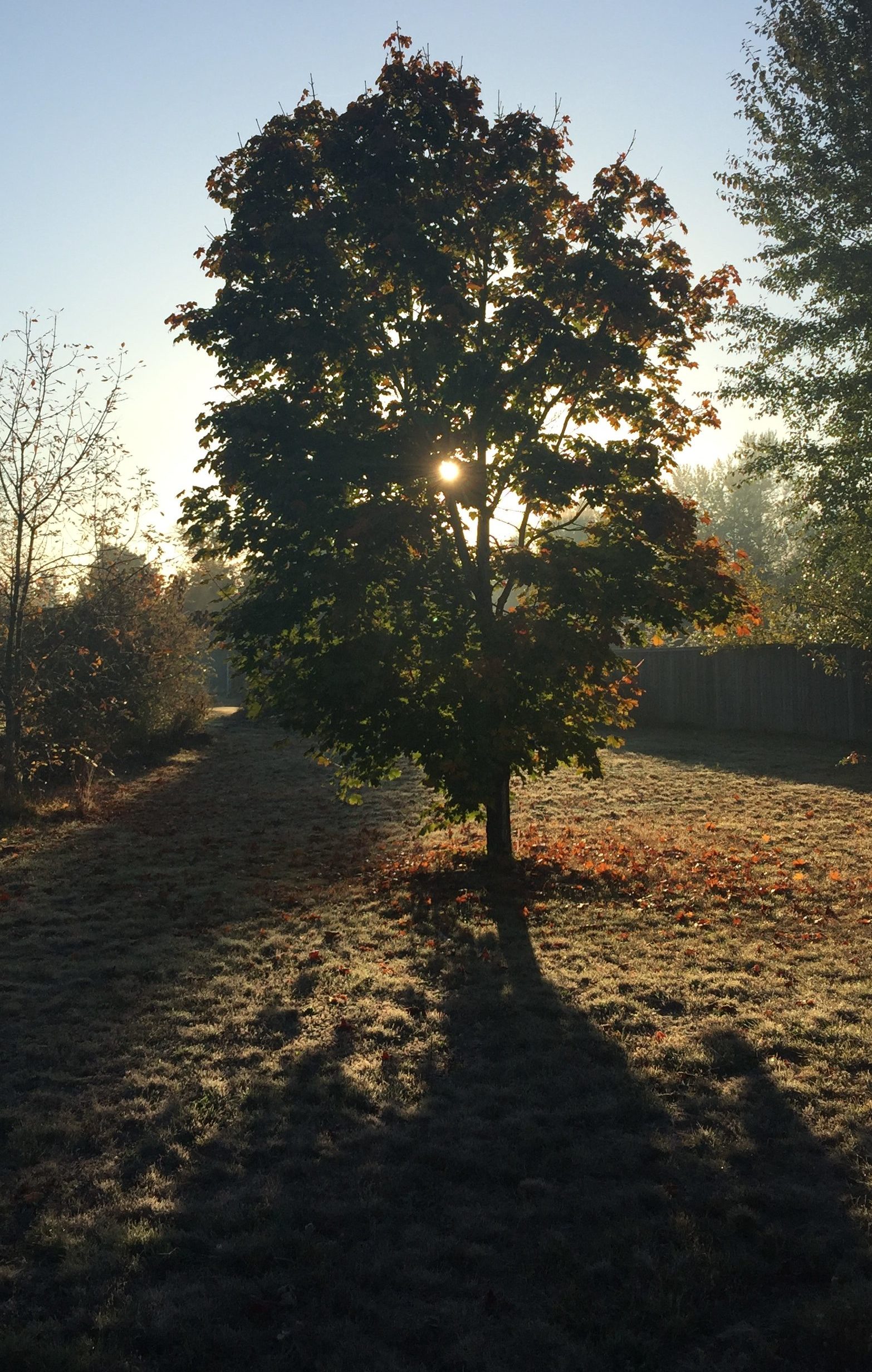During my lifetime, I have planted and transplanted trees (and bushes) from the forest to the yard, from the side of a roadway to a protected position by the house, from one side of the yard to the other, and then back again. (Mom was always wanting to move things around!) If I could number them, it would be in the hundreds but not quite up to a thousand. Give me time.
Planting Roots: You may think you are planting a tree, but your first focus must truly be on the roots. Let the Roots get established in good soil, and the tree becomes a manageable growth as it reaches for the skies. Share on XWhen I enjoy the yard (not a lawn!), my taste runs to trees and bushes instead of flowers (perennials or annuals). There’s something about the spread of the branches and the tallness of the trunks that speak to me at a personal level.
There are life lessons I’ve gleaned from the experience. Perhaps you may find them applicable as well; even though I’m speaking from the experience of life and the planting of trees, you may find some of your own lessons you would enjoy sharing!
First, some trees will are not meant to grow in certain climates. Think about it! Have you ever seen palm trees in Alaska? On the tundra? -40 degrees? No sun? Or sequoias in the tropics? You need to know what a tree will become and the Temperature Zone you are planting in, and determine if the trees you want to grow will survive. This is crucial! A cruel and harsh winter storm can kill off your planted fairweather trees!
Sometimes, or so I’ve been told by nursery folks, a tree can be forced to grow where it’s not normally meant to survive by splicing the trunk into a root ball that knows how to exist in other areas. That’s why I see certain nut trees in the Pacific NW where they have never grown before!
We have a flowering tree and an apple tree growing from the same root ball. The trunks and branches are twisted together so that it’s difficult to see which branch comes from which tree trunk.
Equally, some trees are aggressive enough to take over the yard space, sending out runner roots and blocking other trees’ abilities to mature in their own space and at their own timing. So, you need to control these trees less they take over and destroy your surrounding forest! (Regarding the undergrowth bushes, I’m thinking of Scotch Broom and Kudzu specifically!)
Second. Even though you love what you see, the health of a tree begins below the ground where the root ball is located. A healthy root system is important for the overall health of a tree, and it may take several years for the growth below the ground to allow the tree above the ground to begin sprouting! What you see may have many problems (broken branches, bugs, etc.), but when you first plant the tree, you work hard on keeping the root system focused on rooting deeply to the soil’s nutrients.
Equally, the quality of the ground is important! A tree that plants the tap root deep will not easily survive on rocky ground. When the dirt level is shallow, you need a tree with roots spread out perpendicular to the growth, reaching for the sky.
Third. Think about it. The new growth needs constant attention when we plant (or transplant) something. Sometimes you work hard to keep that tender growth alive until it can take care of itself. For some evergreen and pine trees I’ve planted here on my homestead, I can step back from my constant attention as they take over their ability to thrive after the first year of consciously watering and nurturing.
My real problem comes with the concept of pruning. I’ve ruined some fruit trees because I did not comprehend the “how and what” to trim. Lesson though? Trim and manage them while they are young and small, and you will grow them into shapes that are easier to manage later in life.
The other issue that comes to mind and experience, some trees need to be “staked” so they have a chance to develop resistance to the wind and grow straight even when their twisty trunk would like to grow in just about any direction other than the sky! I just planted 15 Leyland Cypress trees, and they came from the nursery with a bamboo stake next to the trunk. This helps them to grow upright and straight in their early years.
Fourth. You have to think long and hard about this one. All trees create pollen, produce what is necessary to reproduce, and spread their seeds to the wind! For pollen allergy sufferers, you may need to choose where you live and what you decide to grow based on your ability to muddle through the pollen season.
I have two different styles of trees that seem to produce the most pollen… My pine/fir trees spew their pollen with every puff of wind or simply the moving of their branches. On the other hand, the aggressive cottonwoods have already dispersed their seeds to the wind, and one day last week, it looked like it had snowed across the property. The ground was covered with white “cotton” seed wisps!
Fifth, and probably not the last of the list but all I’ll take time to elucidate, you have to guard that planting even after it matures. Dead trees and branches can crash down and destroy other trees around them. I have a cottonwood tree that died at the top (about 40 feet tall), and I need to control bringing it down to the ground, so it does not destroy some other beautiful planted and loved trees surrounding it!
Life has lessons that come from many different sources. I love thinking about it from the perspective of trees and learning how to plant, nurture and enjoy. Why? I prefer a forest over the desert any ol' day! Share on XNow. Take these thoughts and apply them to just about anything around you. From your children to your spouse, career, education, financial strength, retirement planning, personal health, life choices, and anything else you can think of. As your life expands and your experiences grow, you will develop your own set of lessons of life to be lived by. Perhaps, even, you will share your knowledge with others so they can grow from your experiences.
“Character is like a tree and reputation like a shadow. The shadow is what we think of it; the tree is the real thing.” ~Abraham Lincoln
There is a popular proverb that some say came from China, and I’ve not verified its source, but think about planting trees and enjoying their growth like this:
The best time to plant a tree was 20 years ago.
The second best time is now.
You enjoy the fruit of your labors from something you started back in your past. You learn by doing, not by reading about how it should be done. Your experience grows with each effort and attempt.
Pause a moment. Look back through the history pages of your life. Analyze the results of your planting experiences. Have you grown? Are you producing? Is it yielding fruit? Have you taught others, either by example or by words and deeds?
Another proverb? A wise man plants something he knows he will never enjoy.
Perhaps this is where Generational thinking comes into play! Begin something now that you will never see the fruits of, you know, good habits, financial planning, teaching, and growing things for the future!
Maybe these keywords will make sense.
Practice. Do. Learn. Grow. Teach. Enjoy.
Emma’s Tree Planting Video if you care to watch!

